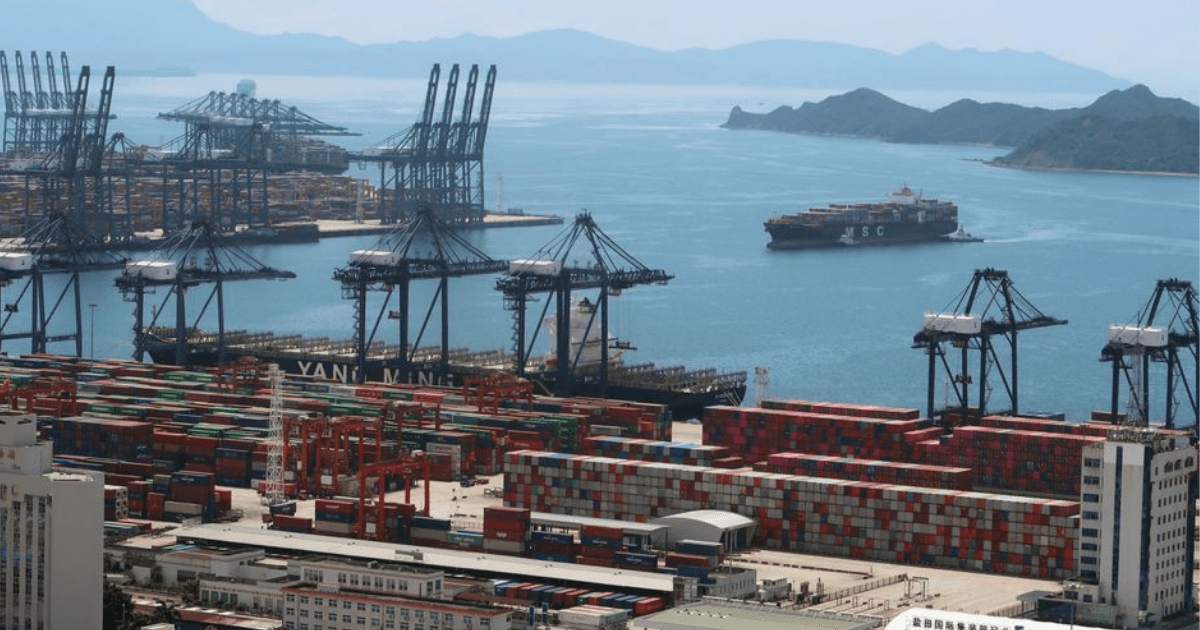Logistics Issues Continue Even as Shenzhen’s Lockdown Restrictions Lift

While pandemic-related lockdown restrictions have eased in Shenzhen, China’s industrial districts, their impact on already snarled logistics will likely be felt in the coming weeks.
That’s because the lockdowns, which began March 14 and were scheduled to continue in Shenzhen’s populous commercial districts through March 20, are expected to further heighten issues that have played havoc with nearly all industries for more than a year. Shenzhen together with Shanghai accounts for 16% of China’s exports.
“Now you are going to see a backlog and when production gets back there is going to be more demand than supply with regards to containers, so it is going to add to the situation,” said Uncanny Brands CEO Matthew Hoffman, whose company booked production of NHL and NBA plush mascots 60-75 days earlier this year as a hedge against continued shipping delays.
Licensed candy tin and energy drink supplier Boston America has seen the time between purchase order and delivery to a retailer lengthen to eight months from six, president Matthew Kavet said. And shipments from China to New York ports that once took six weeks are now running 8-10 weeks, he said.
This most recent lockdown will likely increase competition for an already tight supply of shipping containers, driving up prices at a time when costs appeared to be stabilizing, licensing executives said. For example, prices for 40-foot containers in recent weeks were in the $13,000-$16,000 range, well above the pre-pandemic $2,000-$3,000 range but down from a record surge above $20,000 last fall. As a result of the lockdown, container prices are likely to creep back up in the coming weeks, licensing executives said.
“At this point, when we are planning our business we would like [prices] to be at $10,000 because that is a legitimate number and will probably be the new normal,” Hoffman said. “Unless people come in and redefine that industry, I don’t think it will ever go back to anything less than $10,000.”
The bottom line is that wholesale prices have been rising across the board in line with increased costs across the supply chain. Those increases have been passed on to consumers so far with little pushback. But that may only be a question of time.
The dollar stores are no longer just a dollar, with Dollar Tree having moved to a $1.25 starting point as a result of rising costs. G-III Apparel, which sells apparel under Calvin Klein, Tommy Hilfiger, and DKNY brands as well licensed Dockers and Guess labels, tested increasing prices in 2021 and will more broadly raise them this year, CEO Morris Goldfarb said in releasing year-end earnings on Thursday. Uncanny Brands plans to implement price increases on its licensed plush figures in June, with the top-end going to $22.99 from $19.99, Hoffman said. This follows increased prices on licensed small appliances last year.
“The supply chain in China right now is a little bit of an unknown,” said Goldfarb, whose company four years ago began shifting production to Vietnam from China. “The price increases have been accepted by the consumer and we are a fashion business, not gasoline or a loaf of bread. Fashion has elements you pay for. It is a form and an art. If your art is in demand and a woman wants it in her closet, she will pay a little bit more for it.”
But not all companies agree. Macy’s tried to raise prices on some mattresses and sofas by $100, but shoppers pushed back, CEO Jeff Gennette said. And clothing brand Bella Dahl raised prices on its T-shirts by about $20 before sales fell and the company rolled back the increase.
“There was a revolt,” said Steven Millman, Bella Dahl’s chief brand officer. “If we go any higher, we’ll do half the sales.”




